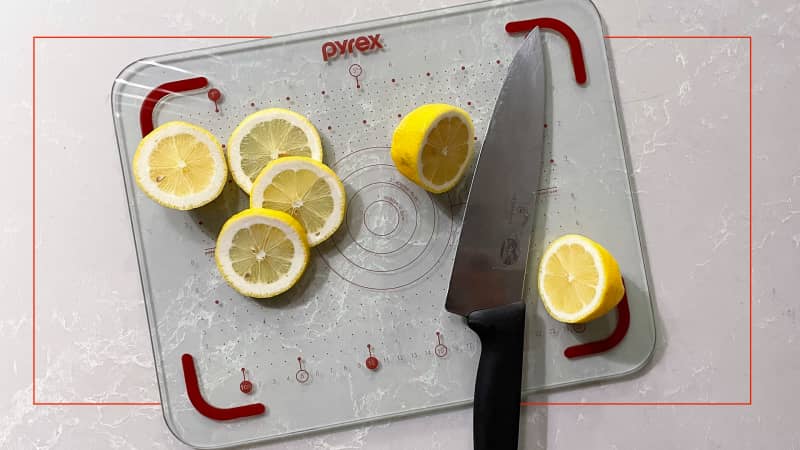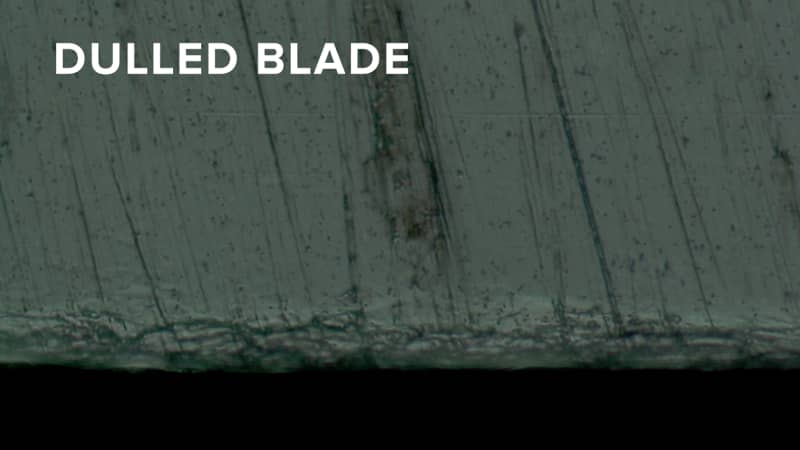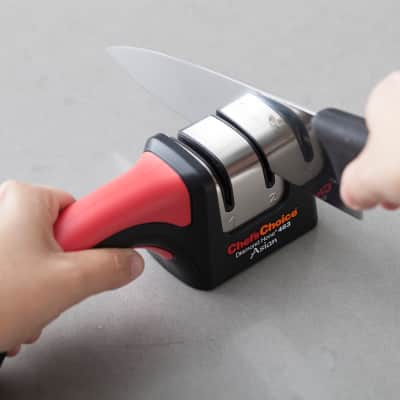Every so often, my Reviews Team colleagues and I get a question that makes us react as though we just watched a jump-scare in a horror movie. One such surprisingly popular, altogether terrifying question is: “Why can’t I use a glass cutting board?”
Why You Should Never Use a Glass Cutting Board
Published Dec. 11, 2023.

OK, maybe I’m being a little overdramatic.
But glass cutting boards are shockingly pervasive: They’re too often the sole cutting surface option at a relative’s house or a vacation rental, and they line the shelves of stores like Homegoods, tantalizing shoppers with their steep discounts and fun designs.
Tempered glass may seem like a good cutting surface. It’s fairly durable, relatively easy to clean, and generally affordable. But don’t be tempted. Here are three reasons to avoid using glass cutting boards.
Sign up for the Well-Equipped Cook newsletter
Shop smarter with our ATK Reviews team's expert guides and recommendations.
1. They Dull Your Knives
You should never cut on glass, especially with knives that you care about. It’s simply too hard a material for most knives to withstand. As your knife cuts through your carrots, onions, or any other food, the blade will knock against the glass, which will dull the sharp edge you’ve worked so hard to maintain.
In fact, when testing honing rods, we use a glass cutting board to dull new chef’s knives before using the honing rods to try to bring back their sharp edges.

Dull knives make every cutting job harder and are dangerous to use. You should avoid dulling your knives at all costs.
(To be clear, if you’re serving cheese or charcuterie on glass or ceramic and are planning on using a duller cheese knife, butter knife, or spreader, that’s fine. We’re talking sharp knives for cooking tasks here).
2. They’re Too Smooth
When you cut on a glass cutting board, your knife will slide against the slick, smooth surface, making it more difficult to control where the blade stops. This means it’s harder to cut with precision and can lead to mistakes—or worse, dangerous accidents.
Metal against glass is also loud and annoying; the scratching, scraping, and knocking sounds are much louder than those made by boards of other materials. It’s truly reminiscent of nails on a chalkboard.
Manual Knife Sharpeners
Can a compact, inexpensive tool keep your kitchen knives in top shape?3. They’re Too Fragile
Even if they’re made of tempered glass, glass cutting boards are more fragile than plastic or wood boards, so the risk of them breaking when dropped is much higher. When you drop a plastic or wood board, you’ll probably only have to worry about picking up food scraps and cleaning your floors. Dropped glass can shatter into pieces across your entire kitchen floor and completely ruin a meal.
You also won’t have to worry about a wood or plastic board breaking during storage or transport—not so with glass.
Kitchen Gear: The Ultimate Owner's Manual
Packed with science-backed advice from professional equipment reviewers, practical how-to guides, engrossing trivia, and 100+ recipes that showcase great gear, this guide is an indispensable source of collected wisdom.What to Use Instead
So, if you’re visiting Grandma and her Santa-themed glass cutting boards or taking a trip where you think you might be cooking, pack a plastic or wood cutting board—or a flexible cutting mat—just in case. It won’t take up a lot of space and will pair well with a safely stowed knife or two (which you should also consider bringing).
And if your knives have been mangled by a glass cutting board lately, there’s hope. You can find out more about how to take better care of them in our guide to sharpening.

